[{1 1}]
2024-11-22
815
The MOC3052, a six-pin DIP photocoupler, has found its way into a myriad of modern electronic applications. Through the lens of its utility, it becomes apparent that its influence extends across industrial automation and consumer electronics, offering a multitude of functionalities.
Catalog

MOC3052 Pin Configuration
Embark on a detailed examination of the MOC3052's pin arrangement, delving into the pin functions and connections to optimize performance. An informed perspective on the pin setup can enhance the integration of this optoisolator in electronic circuits seamlessly.
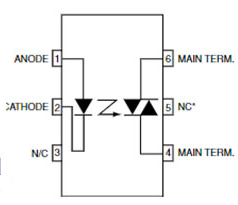
Pin Functionality
- Pin 1 (Anode):
Acts as the input point for LED energization; a decisive step to manage current effectively safeguards it against potential harm.
- Pin 2 (Cathode):
Finalizes the LED circuit, where grounding activates the LED internally, catalyzing photonic activities that influence the triac.
- Pin 4 and Pin 6 (Main Terminal):
Engage with the triac. Adhering to voltage and current guidelines prevents operational lapses and overheating, ensuring reliability and confidence in performance.
MOC3052 CAD Model
Symbol
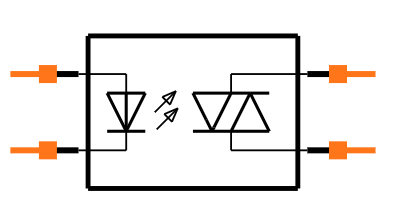
Footprint

MOC3052 Overview
In the realm of electronic systems, the MOC3052 plays a pivotal role by integrating an AlGaAs infrared LED with a silicon bilateral AC switch, akin to a Triac. This configuration allows the MOC3052 to effectively insulate low-voltage digital circuits from the high AC line voltages. Such isolation is fundamentally related to ensuring safety and maintaining the smooth operation of circuits across various conditions.
The core role of the MOC3052 is in facilitating random phase control within high current thyristor or Triac configurations. This capability becomes especially relevant in scenarios demanding precise phase angle adjustment for power regulation. Numerous established industry practices depend on this functionality to sustain both efficiency and control.
MOC3052 Circuit Schematic
Understanding the MOC3052 circuit schematic unlocks the potential of this optoisolator, a component renowned for its ability to provide electrical isolation between different sections of a circuit. This ensures a safer operation and enhances overall performance. A detailed exploration of the schematic diagram enhances comprehension of how this component integrates within a wide range of electronic devices and systems.
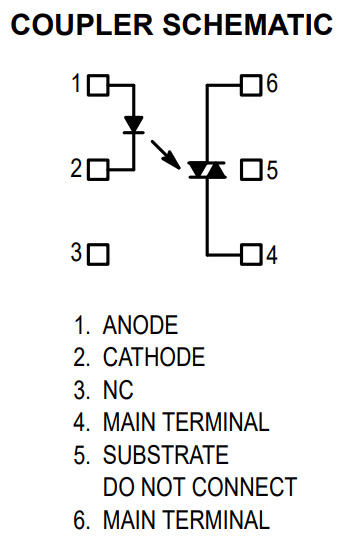
At the heart of the circuit schematic, the MOC3052 acts as an essential interface linking low-voltage control circuits with high-voltage output circuits. The diagram illustrates the process whereby the internal LED, upon receiving power, engages a photodiode on the output, offering the ability to control high-voltage circuits safely. This core function significantly reduces the risk of damage due to voltage spikes or surges.
Technical Features
The MOC3052 presents unique technological attributes that resonate with other Lite-On components, making it an excellent choice for selecting devices with similar functionalities across diverse applications. This requires a thorough analysis of specific features like its zero-crossing triac output, which plays a role in minimizing electromagnetic interference in AC loads. Such capabilities are advantageous in environments where reducing noise levels is significant, akin to the challenges engineers face in sensitive electronic sectors where precision matters.
|
Type |
Parameter |
|
|
|
Factory Lead Time |
12 Weeks |
Mount |
Through Hole |
|
Mounting Type |
Through Hole |
Package / Case |
6-DIP (0.300, 7.62mm) |
|
Number of Pins |
6 |
Current-Hold(Ih) |
400μA Typ |
|
Current-LED Trigger(Ift)(Max) |
10mA |
Number of Elements |
1 |
|
Voltage-Off State |
600V |
Zero-Crossing Circuit |
No |
|
Operating Temperature |
-40°C~100°C |
Packaging |
Tube |
|
Published |
2010 |
Part Status |
Active |
|
Moisture Sensitivity Level (MSL) |
1 (Unlimited) |
Additional Feature |
UL RECOGNIZED, VDE APPROVED |
|
Max Power Dissipation |
330mW |
Approval Agency |
CSA, FIMKO, UL |
|
Voltage - Isolation |
5000Vrms |
Output Voltage |
600V |
|
Output Type |
Triac |
Configuration |
SINGLE |
|
Number of Channels |
1 |
Power Dissipation |
330mW |
|
Turn On Delay Time |
200 μs |
Forward Current |
50mA |
|
Max Input Voltage |
1.4V |
Nominal Input Voltage |
1.2V |
|
Reverse Breakdown Voltage |
6V |
Max Input Current |
50mA |
|
Hold Current |
400μA |
Static dV/dt (Min) |
1kV/μs |
|
Input Trigger Current-Nom |
10mA |
RoHS Status |
ROHS3 Compliant |
|
Lead Free |
Lead Free |
|
|
Distinctive Characteristics of the MOC3052
The MOC3052 sets itself apart in the domain of optoisolators with its exceptional performance traits, which cater to an extensive array of electronic applications. Key among its features is the consistent IFT (Forward Current Transfer Ratio), which experiences minimal degradation in the IR (Infrared) LED. This fosters reliability and a prolonged lifespan in the component's functionality, reducing the frequency of replacements and fostering an environment of trust for the users.
The device further impresses with its isolation voltage capability, reaching at least 7500 peak VAC. In systems where AC mains interference might threaten signal clarity, this parameter allows for the secure separation of high voltage circuits from delicate low voltage elements. Supported by deep-rooted experimental validation, this capability not only ensures safety but also enhances system performance, covering a range from industrial automation to personal electronics, where reliable isolation is a valued feature.
In terms of voltage handling, the MOC3052’s peak blocking capacity stands at 600V. This empowers the device to manage high voltage loads efficiently, making it suitable for applications demanding robust switching capabilities amid high voltage conditions. Such reliability has been demonstrated within power control systems, providing additional assurance to engineers contemplating its use.
Recognition by renowned certification bodies, including UL (File #E90700) and VDE (File #94766), further strengthens the MOC3052's position. These endorsements do not merely reassure in terms of quality and reliability; they also serve as milestones of expected performance in the industry. They underscore the component’s adherence to strict safety and efficiency protocols, reflecting the growing importance of regulatory compliance in modern design strategies.
MOC3052 Applications
The MOC3052 presents an intriguing array of possibilities, especially in managing various AC loads. An in-depth exploration of these applications reveals its versatility and dependability across multiple fields.
AC Motor Drives
In the landscape of AC motor drives, the MOC3052 plays a vital role. It aids in regulating motor speed and torque, which are essential for maximizing the machinery's operational efficiency. The capacity to meticulously adjust these parameters can lead to significant energy savings, an ever-pressing concern in industrial contexts driven by economic and ecological motives.
Starters and Electromagnetic Contactors
Incorporating the MOC3052 within starters and electromagnetic contactors enhances safety and precision. By using this component, there's an increase in the reliability of electrical connections, curtailing downtime associated with contactor failures. This is particularly advantageous in extensive manufacturing setups where keeping equipment running is more than just a necessity.
Lighting Controls
The MOC3052 offers accurate control in lighting systems, facilitating intricate management of lighting intensity and timing. This feature aids in reducing energy consumption in commercial buildings, supporting sustainability initiatives. For instance, automated dimming systems that react to the time of day or occupancy patterns result in long-term cost reductions.
Solenoid Controls
When applied to solenoid controls, the MOC3052 elevates the precision of actuation and curtails mechanical wear. This results in extended lifespan for systems such as automated doors or robotics, where unfaltering and regular function is a constant requirement, enhancing user satisfaction.
Solid-State Relays
Bringing the MOC3052 into solid-state relays achieves faster switching times and bolsters wear resistance, providing a durable solution for power applications. This performance level is particularly significant in settings demanding high reliability and minimal maintenance, such as data centers and telecommunications infrastructure.
Static Power Switches
Deploying the MOC3052 in static power switches ensures effective power management. These switches facilitate meticulous management of power distribution in industrial environments, where precise control helps avert costly interruptions to operations.
Temperature Regulation
In temperature regulation, the MOC3052's precise triggering capabilities furnish superior control over heating elements, directly influencing product quality and safety. In sectors like food manufacturing, such control is central to upholding strict safety standards and preserving operational efficiency, fostering consumer trust.
MOC3052 Application Circuit
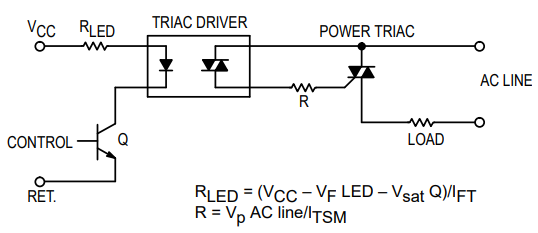
MOC3052 Test Circuit
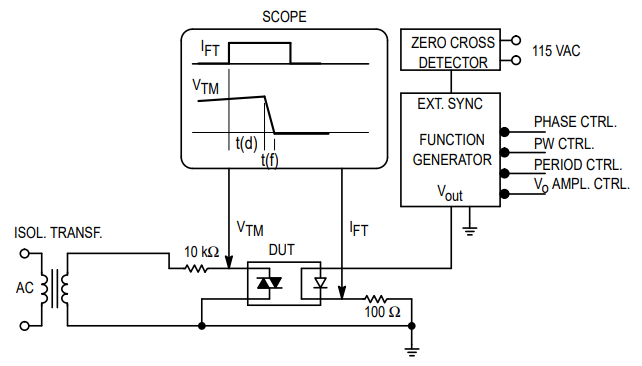
MOC3052 Alternatives

Comparative Analysis of MOC3042 and MOC3052
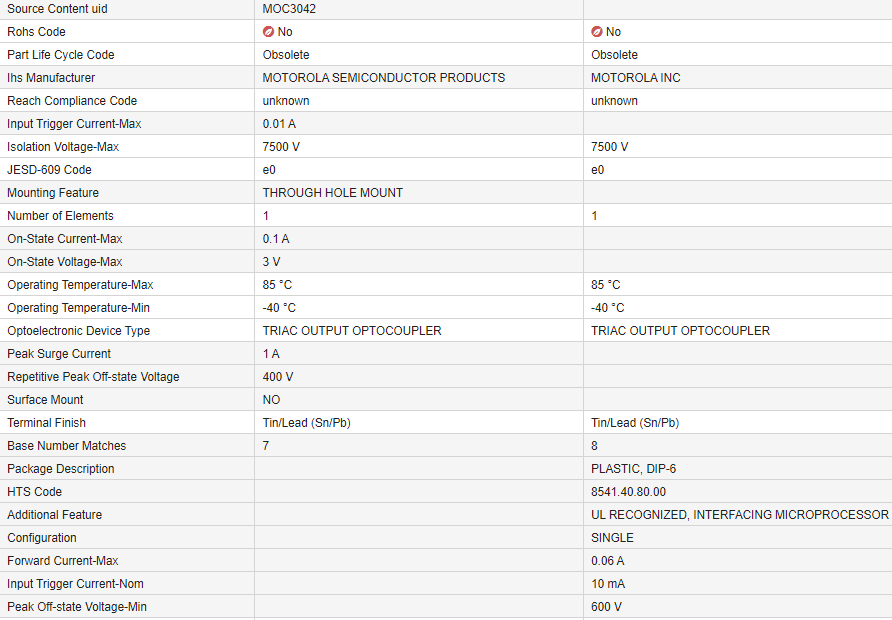
MOC3052 Packaging
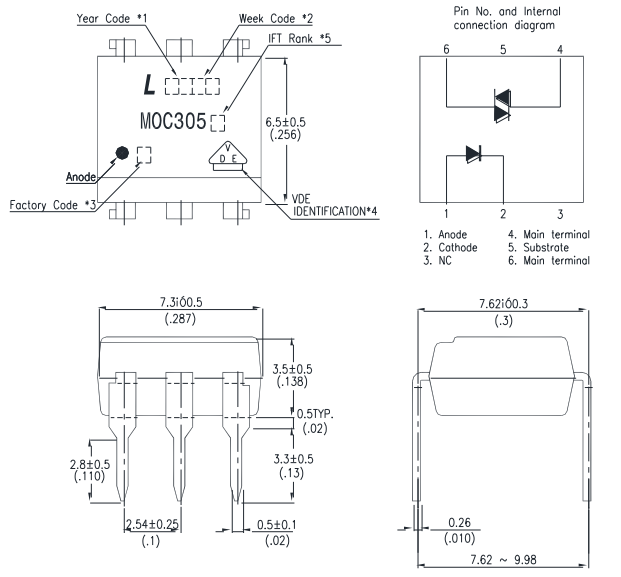
MOC3052 Manufacturer
From its inception in 1975, Lite-On has evolved into a prominent force within the optoelectronics arena, celebrated for its extensive range of LED and infrared solutions. This progression has been fueled by substantial manufacturing prowess and a steadfast dedication to research and development, enabling the company to secure a distinguished place in the industry.
Datasheet PDF
MOC3052 Datasheets
MOC3052.pdfMOC3052 Details PDF
MOC3052 PDF - DE.pdf
 FAATATAU IA TATOU
Tagata faamalieina i taimi uma.Agaalofa ma le talitonuina ma fiafia masani.
FAATATAU IA TATOU
Tagata faamalieina i taimi uma.Agaalofa ma le talitonuina ma fiafia masani.
suʻega suʻega.O oloa aupito pito sili ona maualuga tau ma le tautua sili o lo tatou tautinoga faavavau.
![[{1 1}]](/upfile/blog/small_2024112217110194211.png) [{1 1}]
[{1 1}]
2024-11-22
![[{1 1}]](/upfile/blog/small_2024112215493918241.png) [{1 1}]
[{1 1}]
2024-11-22
E masani ona fesiligia fesili [FAQ]
1. How MOC3052 Operates
The MOC3052 serves to transmit electrical signals between two separate circuits using infrared LED emission in conjunction with a photodetector. This configuration not only safeguards against direct electrical contact but also preserves the integrity of the signal, thus allowing for innovative circuit designs. Attaining precision in aligning the LED and the detector is essential for maintaining the quality of transmission, an aspect that can stir a designer's pride in their craftsmanship.
2. Implementing MOC3052 in Phase-Shifted Thyristor Dimming Circuits
MOC3052 finds its place in phase-shifted thyristor dimming circuits and naturally accommodates half-wave conduction when interfaced with AC signals. For successful triac activation, conversion to direct current becomes imperative. This transformation supports the triac's stable operation, a nuanced process appreciated by those who enjoy the art of finely-tuned dimming controls. The design and synchronization of circuit phases profoundly influence the experience of smooth and efficient dimming, a feature celebrated in sophisticated lighting systems.
VAI VAEGA Numera
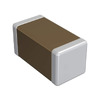 GQM1885C1H120JB01D
GQM1885C1H120JB01D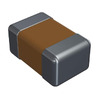 08051A330JAT4A
08051A330JAT4A 08053C153JAT2A
08053C153JAT2A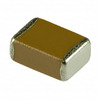 CC1812KKX7RBBB153
CC1812KKX7RBBB153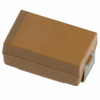 TPME687K006R0023
TPME687K006R0023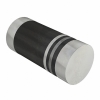 BYM07-100-E3/98
BYM07-100-E3/98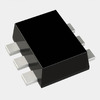 DMC2400UV-13
DMC2400UV-13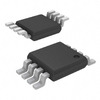 SI6433BDQ-T1-GE3
SI6433BDQ-T1-GE3 MAX3676EHJ
MAX3676EHJ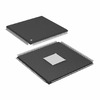 UPD70F3529GMA9-GBK-Q-G
UPD70F3529GMA9-GBK-Q-G
- RT0603BRD0756RL
- R5F61663RN50FPV
- MAX1655EEE+
- VI-JWL-CZ
- 2MBI300F-060
- 6MB75J-060
- V23990-K222-A-PM
- LT4321IUF#PBF
- T491A225M025ZT
- LT1802IS#TRPBF
- AD5302BRMZ-REEL7
- AD8180ARZ-R7
- SI2166-D60-GMR
- NUF2441FCT1G
- UCC3972PWTR
- ADF4360-9BCPZ
- ADT7473ARQZ-RL7
- AD7740KRMZ-REEL7
- AD7819YR
- K4X56163PL-FGC6
- LC4384V-75F256I
- MAX3693ECJ-T
- MC34074CDTR2G
- MK2049-34SI
- PPC740L-GB500A2
- SN03007DCAR
- UBX-G5000-BA
- AP6N3R4CMT-L
- AT43006-OZCT
- M34286G2-143GP#W4
- NT96432BG
- PST600DMT-R
- TLC34076-135FN
- TMP93PW44ADF
- QMV8631EF5TR-1LF
- SPC5604BVLQ6
- ACPM-8817-TR1
- HI-6010CT
- PER601-P117-N0015